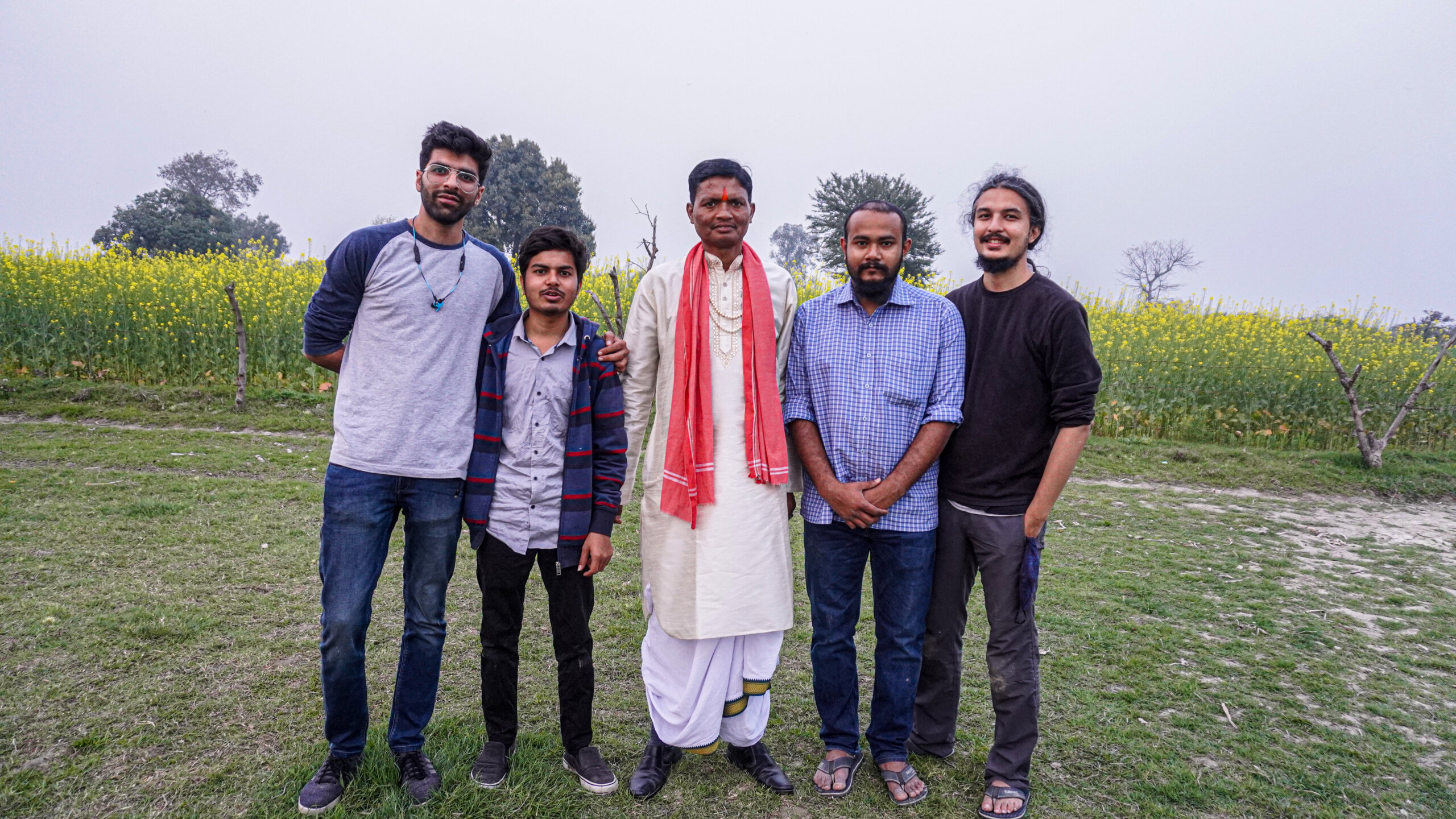
“Marking time with Pharwahi, an age-old tradition of Awadh.”
The beauty of the state of Awadh lied in the richness of its culture as the region itself has experienced diversity in the most literal sense. One could say that it is the definition of diversity in cultures, contending with each other during the past and eventually coming together during the modern age. Its music reflected a similar tenor once we started getting into the deeper art forms that very few people had heard of and even fewer understood well enough to pass on to the next generations. This search for long lost folk melodies leads us to Sheetla Prasad Verma, officially a senior government employee in the office of the District Magistrate of Ayodhya.
When we met his humble personality, he welcomed us with a warm smile on his face. As we started talking to him, he began to apprise us about various lost forms of folk art that are vanishing due to the influence of western culture within the region. He has spent the last two decades working towards the revival of these forms of art and seeks to create a generation of young people who wish to become self-dependent through these. Having studied sociology as a subject of his Master’s degree he seems to have the will and ability to put all of that knowledge to good use for the revival of folk music in the region and is completely devoted to this goal. Well known among the folk music communities within the region, he got us in touch with various highly skilled and experienced musicians who never had the chance to make it big but carry the weight in terms of talent to achieve the same.
From specialists in harmonics to expert percussionists and also folk dancers who brilliantly express each emotion on their faces while performing their art, we saw raw talent residing within the confines of unexplored regions of the most populated state of the country.
Eventually, we were lead towards fields of Mustard with beautiful yellow flowers blooming under the sun on a pleasant afternoon in the month of February. There were young dancers and a few adolescent singers who are nurturing their talents and highly experienced musicians to balance out the spectrum of diversity yet again. Sounds of the music also began to attract a crowd from the surrounding villages and a few puppies who were covertly playing around the fields.
Spirituality seemed to be the soul of the music around here as it has been for years in the Hindu culture. Their performance began with a short prayer a ceremony that started with strong drumming of the Nakkada and then a strident chime of a conch shell to mark the beginning of the performance. Men were wearing colourful clothes and makeup along with bells on colourful bottoms that would go on to add to the percussions while the beats were given by musicians. Women were wearing even more brightly coloured sarees with light makeup only to enhance their natural beauty. The dancers merrily moved on to the subtle arm and leg movements in coordination with each other.
The cultural breakdance had begun and a sudden transition to rapid coordinated formations was a treat to watch. They were telling a story about the wedding of Lord Rama and Goddess Sita that was taking place in the most peculiar way. Men carried large Bamboo sticks with rubber grips on the lower end and flutes in their hand while women carried clay pots, supporting them on their head with the help of their hands. The dancers slowly began to act out representations of Indian Gods beginning with Lord Rama with a bow and arrow in their hands and eventually imitating Lord Vishnu, Brahma, and Shiva as the guests in the wedding ceremony with the song, that goes like-
“Raja janak ji ke sundar bitiyawa se vyaahan chale Shri Ram ho,
(Lord Ram is on his path to marry Raja Janak’s beautiful daughter)
Vyaahan chale Shri Ram ho”
(Lord Ram is on his path to marry)
The intensity and passion while carrying out the act was a mesmerising sight and was so accurately done that one would understand what kind of feeling each of these gods would represent. The colours and flavours of such different art forms was a mesmerising and humbling sight and told us an unforgettable story about the hidden richness in culture within the region. It was not only the historic and spiritual representations that gave us this realization but primarily the unfolding of strength, talent as well as passion of these artists which truly moved our hearts.
